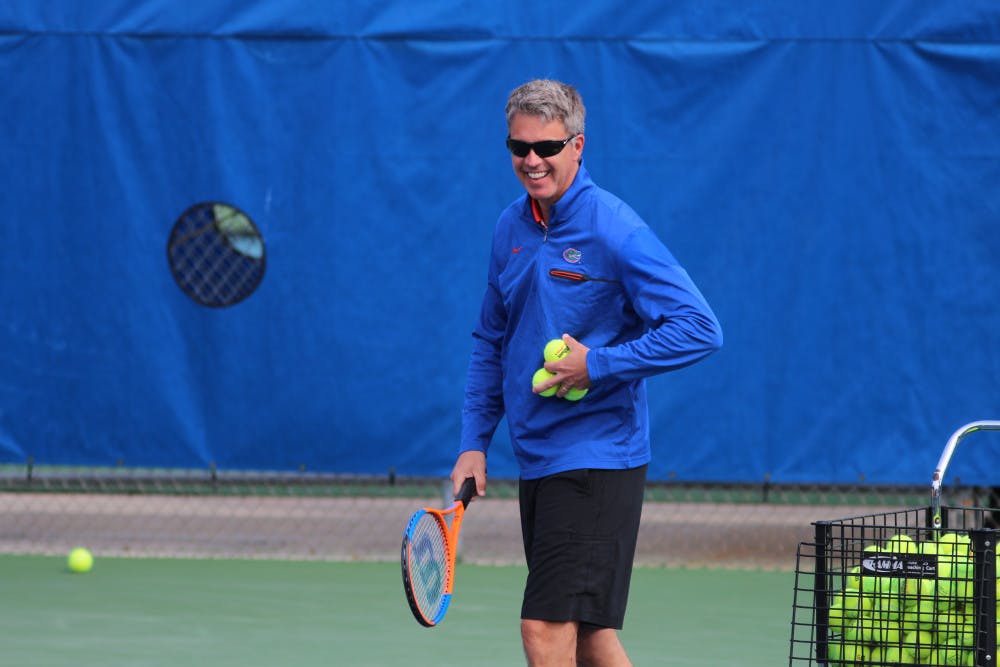The NCAA is known for producing elite, homegrown American athletes. They grow up in America, play for American colleges, get drafted by American teams and become national icons for other Americans. Some may even get the opportunity to represent the United States at the international level.
College tennis, however, is the polar opposite.
The sport as a whole has seen a decline in the United States over the last 20 years in both the men’s game and the women’s. Sloane Stephens’ win at the 2017 U.S. Open was the first Grand Slam for an American woman not named Serena or Venus Williams since 2002 (Jennifer Capriati, Australian Open).
Grand Slams have featured 16 different non-Williams winners from across 12 different countries — 10 of which are in Europe — in that time span. 2018 alone has seen all four of its Grand Slam champions come from different countries: Denmark, Romania, Germany and Japan.
It’s only fitting that, as college coaches have struggled to find championship-caliber American talent, the college game has followed suit. Thirty-five of the 64 players in the field for the 2018 NCAA Division I Women’s Singles Championships last May were from 19 different countries other than the United States.
“I think it’s possible (to have just Americans),” UF tennis coach Roland Thornqvist said. “There just aren’t that many American players year in, year out that are at the level required... to fill Florida’s roster, Duke’s roster, Georgia’s roster, Stanford’s roster every year.
“If we want to be competitive, we have to pay attention to our talent level. That is certainly a guiding force in how we recruit.”
Two members of the Gators’ 2017 national-championship roster were foreigners: national singles runner-up and Australian native Belinda Woolcock and the Russian four-time All-American Anna Danilina.
The influence of international tennis players has arguably never been stronger at UF than with this year’s squad, however. Half of the six-woman squad is from outside of the country. Thornqvist himself was an international college player, coming over from Sweden to play for the University of North Carolina.
Thornqvist admitted that his own personal experience helps him connect with players and recruit.
“I think that I understand what (international players) are going through when they get here,” he said.
The players themselves often come over to the United States not just to play tennis, but also to pursue an education at the same time, which can often be a struggle to balance.
Sophomore transfer Ida Jarlskog of Sweden cited her problems balancing time at school and time on the court as one of the reasons why she transferred from Georgia Tech.
“It was so rough. I did chemistry my first year (at Georgia Tech),” she said. “I was exhausted all the time. I had time for tennis, but I didn’t have time for sleep. I slept like four hours a night.”
Jarlskog is currently majoring in applied physics and kinesiology in her first year at Florida, and she hopes to go pre-med if her tennis career doesn’t pan out.
For some international players, the problems aren’t on the court. It can be challenging to play tennis at a high level and to deal with the pressures that come with it in a new country. Tsveta Dimitrova, a junior transfer, found herself on a team at Houston made up entirely of international players at a school that she didn’t even get a chance to visit before signing with the Cougars.
“When I first came (to the United States), I was struggling a lot with the language and even with math, because I couldn’t understand the questions,” she said. “I knew math, but I didn’t know what they were asking, so I couldn’t solve the problem.”
Dimitrova, who hails from Bulgaria, also said she felt constantly pressured by her coach at Houston to perform on and off the court. Dimitrova admitted that it helped her grow as a player, but it hurt her relationship with her coach. She ended up leaving the job at Houston for the head coaching spot at the University of Arkansas.
Left without the woman who recruited her to Houston, feeling stuck in the “1” position against AAC-level competition and seeking a harder challenge, Dimitrova decided to transfer.
“I didn’t know anybody on the team, I just knew that the University of Florida is (a) huge athletic program, not only in tennis, but every other sport,” she said. “I was looking for (a) big program that is going to challenge me, you know? It’s all about improvement.”
Follow Brendan Farrell on Twitter @Bfarrell727 or contact him at bfarrell@alligator.org.
UF women's tennis coach Roland Thornqvist is from Sweden and said that being from outside the U.S. helps him recruit international talent. “I think that I understand what (international players) are going through when they get here,” he said.






